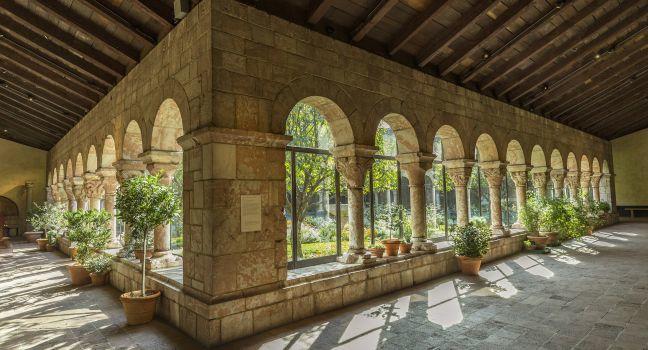Fort Tryon Park
Come to Fort Tryon Park to visit the Met Museum's medieval branch, the Cloisters, and stay for the glorious Hudson River views, the gorgeous landscaped gardens, the 8 miles of winding pathways, and the Revolutionary War history. Perched on one of the highest points in Manhattan (hence "the heights,") the 67-acre oasis was designed by Frederick Law Olmsted Jr. and gifted to New York City in 1935 by John D. Rockefeller Jr., and today its more than 650 varieties of plants, trees, and shrubs are the gifts that keep on giving with every season. During the Revolutionary War, the area was part of the Battle of Fort Washington, a seminal Continental army defeat in the American Revolution. While the Continental Army ultimately prevailed, the site originally named for the last British governor of colonial New York, William Tryon, continued to be referred to as Fort Tryon. Look for the monument to Margaret Corbin, a woman who took up her husband's canon when he was shot and killed during battle: “On this hilltop stood Fort Tryon, the northern outwork of Fort Washington, its gallant defense against the Hessian troops by the Maryland and Virginia regiment 16-November-1776 was shared by Margaret Corbin, the first American woman to take a soldier’s part in the war for liberty.” Other highlights include the Billings Arcade, the remains of a stunning arched entrance to a grand mansion (you've likely seen this on Instagram) and the Heather Garden, where locals welcome spring with parading bagpipes and heather shearings. Don't miss the gatehouse on your way into the park with the apt sign "NYC's coolest office."




